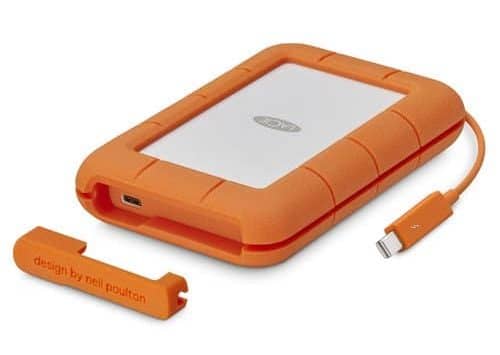Day 5: 24 Insights in 24 Days 2018 New Year Marathon
On-Set: So you want to buy a Hard Drive?
As a freelance DIT my jobs often start with a phone conversation asking the same three questions:
- Are you available for this (these) dates?
- Can you work for this rate?
- What kind of hard drives do you think we should buy?
Now I’m a true believer in Michael Cioni’s concept of every production is like a snowflake, never two are the same. And depending on the snowflake of the production you’re bidding on, your choice of hard drive may change. So after dealing with the first two questions, you need to get a few details from your client before answering the third:
- Is this project a commercial, a TV series or a feature film? ~ (This helps you determine what size hard drives you need.)
- What type of cameras is the DoP planning on using? ~ (8K Red, 2K Arri Raw, 1080p C300? You get the idea)
- How many cameras will we be shooting with? ~ (It surprises me how often DITs or Data Loaders forget to ask this until Day 01 of the shoot)
- What is the shooting schedule like? ~ (Are we run & gun documentary style or are we in the same location most of the day)
- Will we be transcoding on set? ~ (That just doubled the space you need)
Don’t let someone else pick your drive
A few years back I was working a fairly large commercial shoot with a six-figure budget (the good old days) when a PA drops off a Walmart bag on my cart. What’s this I ask? He replied your hard drives from production. Inside were two USB 2.0 bus powered hard drives that the PA was sent the day before to pick up with the instructions to go buy some Hard Drives. I called over the Production Manager to ask him about it:
“We are working for Client X who flew the Director and DoP in from LA and all the talent in from NYC. They are all staying at a four star hotel, yet you want to risk all that on a pair of $69 drives?”
His response was to shrug his shoulders and tell me that it was my job to make sure nothing happened to them. Apparently, I needed a different tact for him to understand the problem. So I opened the drives and did a speed test (as I do with every drive I use for the first time) to be sure it’s working like expected. I then approached the topic with him again, this time with the numbers.
“We are shooting 2K ProRes 4444 and with our current schedule we’ll expect to run out of drive space by the afternoon of Day 02 plus with all this footage there should be X hours of overtime per day to do all the transfers at these speeds.”
Overtime is the magic word that no one in production wants to say aloud. After a call to the Apple store, the Hard Drives were updated to 4TB G-Raids with Thunderbolt, which is what it should have been at the start.
A Drive for Every Job
In this Insight, I’m offering recommendations for several different classes of hard drives, as it stands at the start of 2018. The class of hard drive you choose, is very dependent on the needs of each particular production. Once you’ve chosen your class, the hard drives I recommend are in no particular order. But they’re ones I feel confident using.
Bus Powered Hard Drives

What defines a drive as being bus powered is its ability to draw power from the same cable that the data is being delivered upon from the computer. These drives are great when you are involved with a fast paced shoot where you have many setups and breakdowns to move to a new location or if your location is remote and power options are limited. The drawback to this type of drive is the slow transfer speeds with most topping off at 120-130 MB/s. Also size has been a concern but I have seen a few 4TB bus powered drives on the market recently.
Member Content
Sorry... the rest of this content is for members only. You'll need to login or Join Now to continue (we hope you do!).
Need more information about our memberships? Click to learn more.
Membership optionsMember Login


